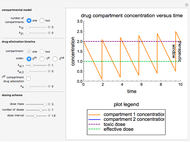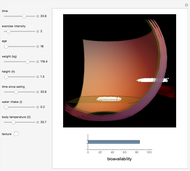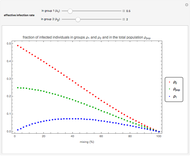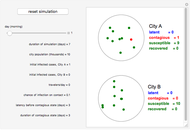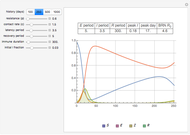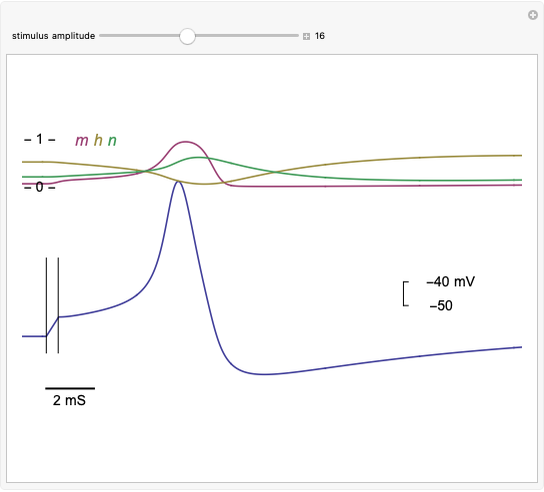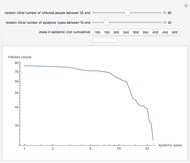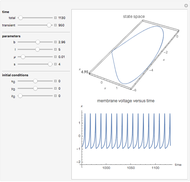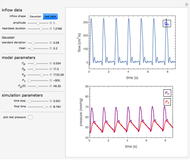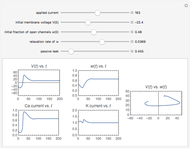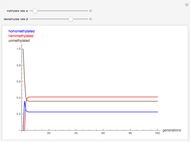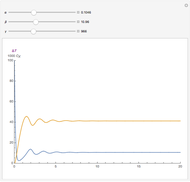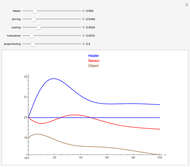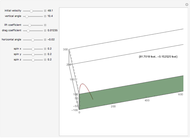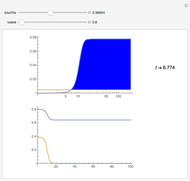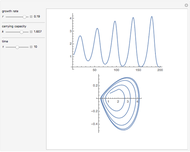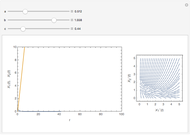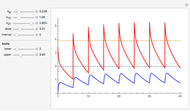Pharmacokinetic Two-Compartment Model

Requires a Wolfram Notebook System
Interact on desktop, mobile and cloud with the free Wolfram Player or other Wolfram Language products.
In the pharmacokinetic two-compartment model, the rate coefficients are determined by the physiology and the specific drug properties. In order to establish a desired drug level in compartment 2 (blue line) the size and the frequency of the dosage are the available variables. The reactions are taken to be first-order reactions. After entering appropriate values for the rate coefficients and desired target drug levels, these variables are adjusted to achieve the desired result. Clinical studies are used to obtain values of these constants for each drug regime.
Contributed by: Benson R. Sundheim (May 2011)
Open content licensed under CC BY-NC-SA
Snapshots
Details
An example is alcohol distributed between blood and liver as studied in [1].
A system of drug classification based on comparative values of a drug's intercompartmental rate constants is proposed, and characteristics and consequences of each class are discussed in terms of possible therapeutic results in [2].
References
[1] M. D. Levitt and D. G. Levitt, "Use of a Two-Compartment Model to Assess the Pharmacokinetics of Human Ethanol Metabolism," Alcoholism Clinical and Experimental Research, 22(8), 1998 pp. 1680–1688.
[2] F. P. Abramson, "Two-Compartment Pharmackinetic Models: Computer Simulations of Their Characteristics and Clinical Consequences," Journal of Pharmaceutical Science, 70(2), 1981 pp. 141–146.
Permanent Citation
"Pharmacokinetic Two-Compartment Model"
http://demonstrations.wolfram.com/PharmacokineticTwoCompartmentModel/
Wolfram Demonstrations Project
Published: May 10 2011







